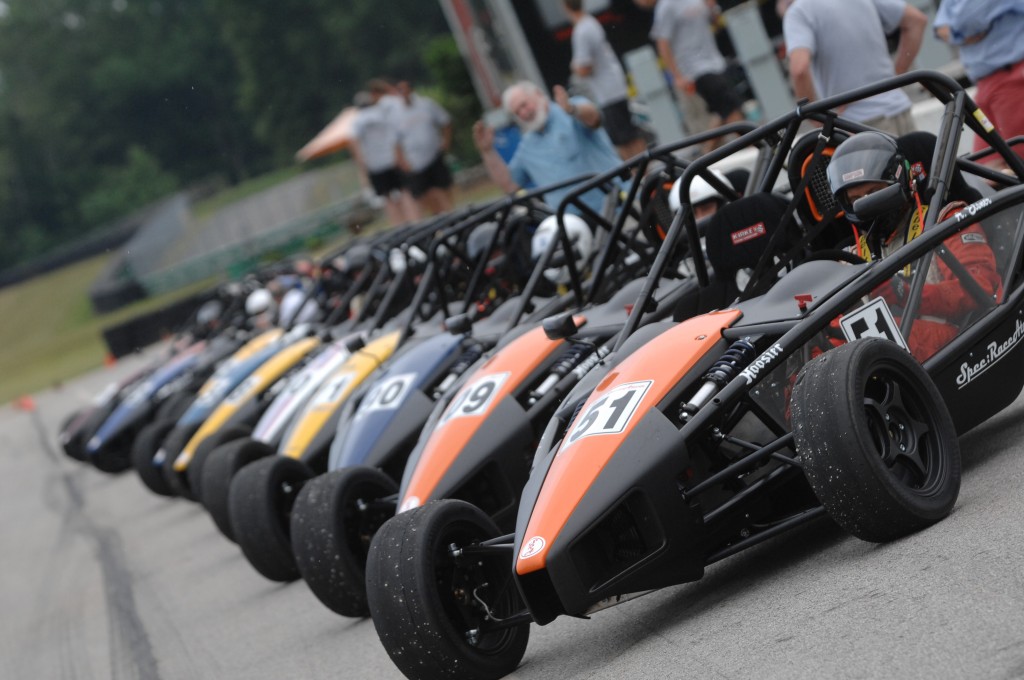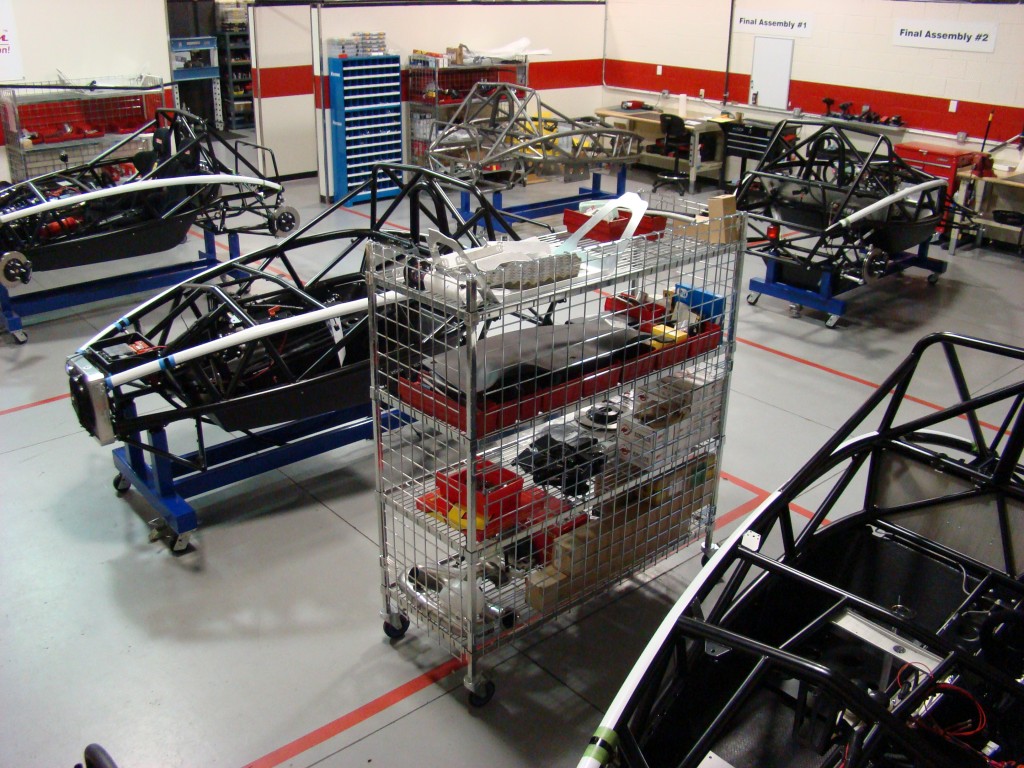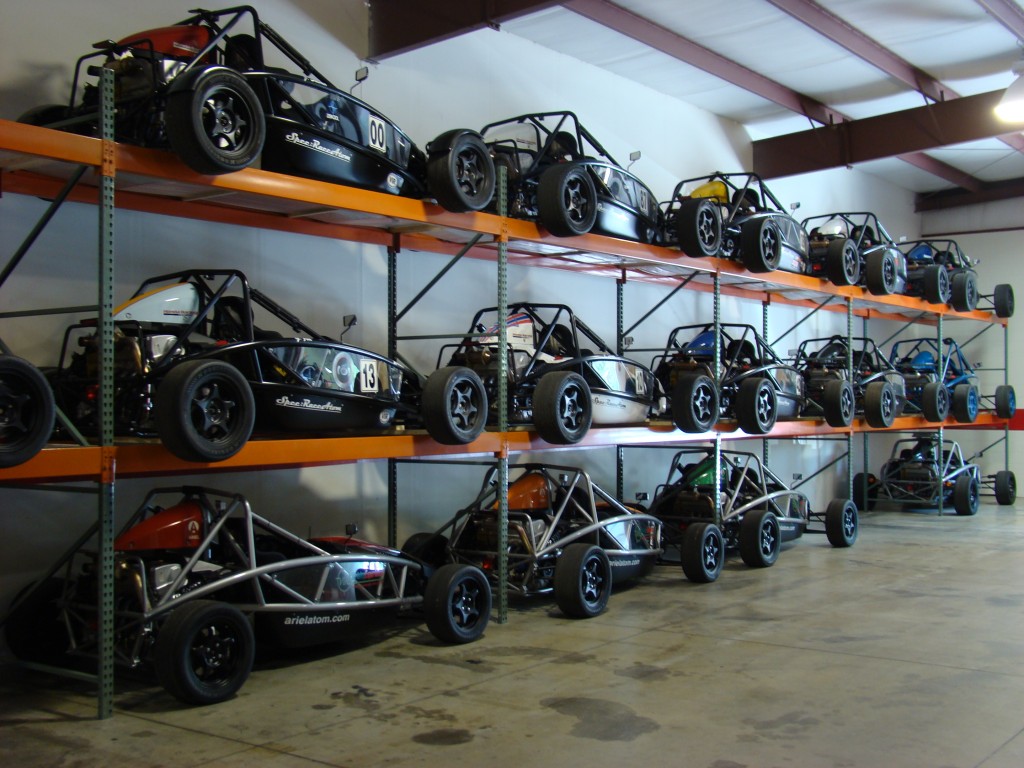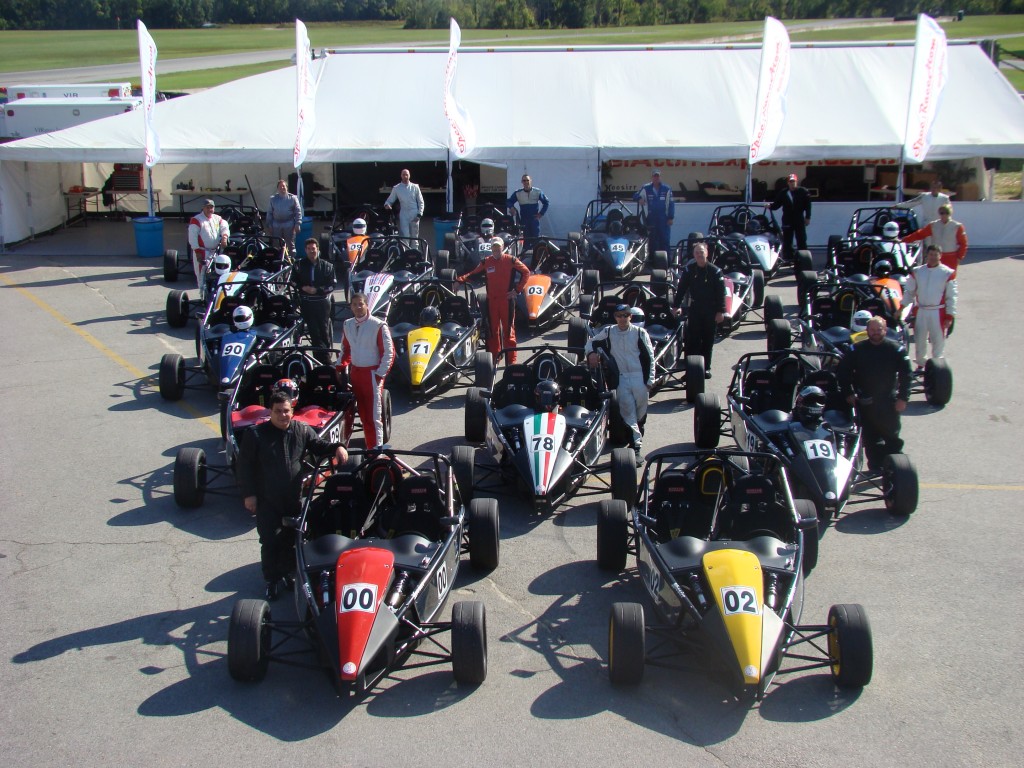Element K
The Ariel Atom has a fearsome reputation. Trackday weapon, two-seat go-kart, stretcher of faces and squasher of spleens; automotive journalists are always keen to emphasize its position as outlier on the risk/reward spectrum. Now an organization in rural Virginia is attempting to build a different legend for the Atom: cornerstone of America’s most accessible Spec race series. It seems like an unusual path to take for a car that began life as an automotive curiosity, drawing fame primarily for being raw, uncompromising, and unforgiving…
It’s called Spec: RaceAtom (SRA), and it’s the brainchild of TMI Autotech, which builds all North America-market Atom 3s under license from Ariel Motor Company. The premise is simple- there are ten races a year, from June to September, all at Virginia International Raceway (where TMI is headquartered). Drivers purchase their car, and then have a choice of additional services, including car storage, transportation, setup, and maintenance, at reasonable cost. Tuning is limited to spring and damper rates and tire pressures, to ensure every car is competitive. In the interests of simplicity, the cars don’t even have swaybars.
This may seem a highly tangential topic for a Honda enthusiast website, but the Atom’s most prominent feature, its nucleus, is pure Honda. K-series motors have powered the UK-market Atom since its inception in 1996. The first US-specific models, made under license by Brammo, were powered by GM Ecotec motors.
“When we acquired the license for the Atom 3, we wanted a clean break,” says Mark Swain, TMI Autotech’s sales and marketing head, “so we took the car back to its roots with Honda power.” It seems to have worked out for them- business is flourishing. The first season saw an average of ten cars on the grid. The second saw the field grow to a total of 48 participants, with around 20 cars attending each race; there were four winners among ten races. Even more telling, during my tour of the facility, every car in final assembly was an SRA.
“We’re really happy with the variety of drivers we’ve got,” comments Swain, “We’ve got guys in their 20’s, 30’s, 40’s- and the field is growing.” He’s keen to emphasize, though, that the series is about camaraderie as much as competition- no one is launching a professional race career here.
This is a refreshingly honest attitude for hobbyist racing, which in some notable cases has seen the perceived stakes, and thus cost of entry, soar precipitously. That’s not to say TMI doesn’t take a keen interest in ensuring the competition stays intense; Swain adds, “We worried a lot about how we were going to equalize the K20 and K24 cars. Then we took them out and lapped them, and the times were exactly the same. The 1000 extra revs [and commensurate gearing difference -Ed.] makes up for the slight torque deficit.”
The Atom 3’s drivetrain is taken straight from the Civic Si. With the exception of the exhaust and ECU, the motor, transmission, and differential are completely stock on naturally aspirated cars. Interestingly, the Hondata ECU alone apparently frees up around 30hp.
What will be less surprising, at least to those of you who track your cars, is that in two seasons of SRA, they have never had a mechanical failure. Add the facts that a season can be done on two sets of tires, that a set of pads for the Wilwood brakes costs a scarcely believable $70, and that there are no body panels to bash, and the $47,500 cost of entry (which covers the car and initiation into the VIR Club) starts to fall in line with TMI’s philosophy of accessible racing.
TMI’s continually-expanding facility at VIR is an engineer’s dream- they’ve gone from manufacturing about half of the 1600 parts in each Atom to almost 80 percent. The fabrication shop features a 3-axis CNC tube roller, the only way to reliably create the Atom’s signature swooping chassis rails. Being a deeply boring person, I nerded out over partially assembled cars for half an hour- despite being tiny, each car has a wealth of fascinating details to absorb, from the carbon headlight pods to the monstrously convoluted exhaust.
The storage room, where parts and assembled cars are kept, is strangely reminiscent of a Hot Wheels display box, with SRAs in a panoply of unique liveries kept on a rack three cars tall and eight long. Hiding in the bottom row is a surprise- the demonstrator Atom V8, the very car featured on Top Gear. It’s hard to keep from drooling on the carbon bodywork. Bizarrely, it has two steering columns, so that it can be easily converted from left to right hand drive, and vice versa. It’s on its way to a very lucky customer, one of five in the US.
As I’m leaving, the conversation turns to road cars- Mark has just bought himself a 2.7l Porsche Cayman. It replaces a Honda CRX, which had lasted 300,000 miles. He had bought the Honda on a whim, because it was totally rust-free; well-preserved CRXs are nearly impossible to find, and he had started in motorsports racing them in Canada. On ice, apparently. He’s enjoying the Cayman, but “if another rust-free-CRX turned up, I’d probably buy it.”
This, I think, is why TMI have clued in to a new formula for amateur racing- they’re car guys first and foremost. I sincerely hope they continue to succeed, in no small part for selfish reasons- it’s going to take a few years for early SRAs to depreciate enough for me to afford one…
A big thank you to Mark at TMI for taking time to give me the in-depth tour.




